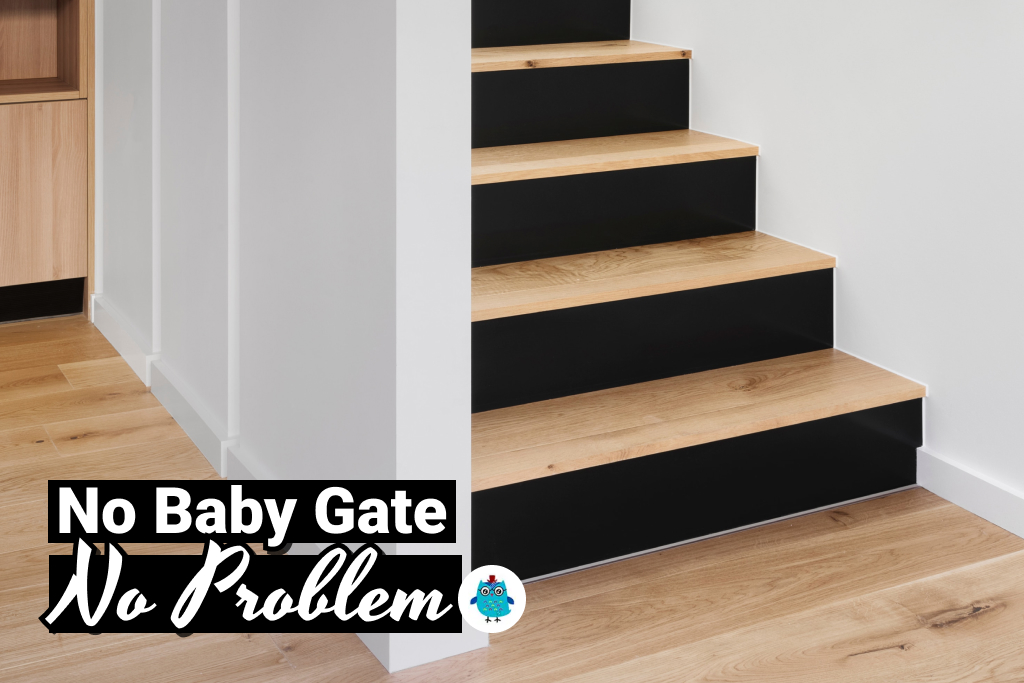As a father to two lively youngsters who’ve turned my life into a whirlwind of occasional worry, I know firsthand how anxiety-inducing it can be to see your toddler making a beeline for those hazardous stairs.
Traditional baby gates are a great solution to keep your little explorer safe, but they might not be an option.
Perhaps you’re here because a conventional baby gate doesn’t quite blend with your home’s aesthetics, or you’re looking for cost-effective solutions. You may be dealing with space constraints or living in a temporary home or vacation rental where drilling is not an option. The scenarios are endless and unique to every family, just like ours.
This guide will cover the following:
- 8 Ways to Block Stairs Without a Baby Gate
- Why Would You Need to Block Stairs Without Baby Gate
- Portable and Damage-Free: Baby Gates for Temporary Homes
- Conclusion
Explore creative ways to childproof your stairs without a baby gate. Find safe, practical options for every scenario, from DIY solutions to portable gates.
Ways to Block Stairs Without a Baby Gate
Baby-proofing is not a one-size-fits-all solution. It requires some out-of-the-box thinking, and that’s exactly what we will do here. I’ve gathered 8 ideas to help you keep your little ones safe from stairs without resorting to traditional baby gates.
These range from DIY hacks to design-conscious alternatives that won’t disrupt your home’s aesthetic.
Use Furniture to Block Stairs
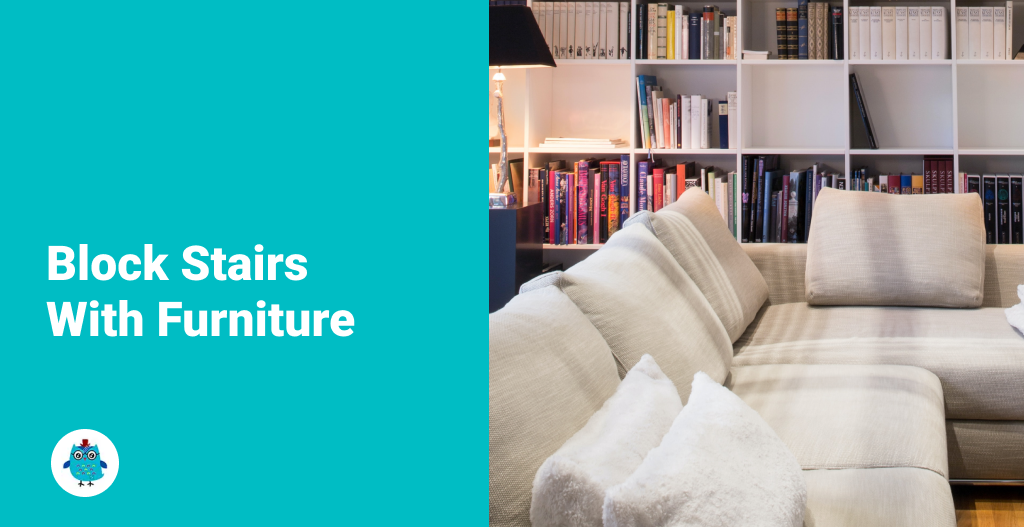
Move a large piece of furniture in front of the staircase to block access. The furniture should be heavy enough that a child or pet cannot move it.
- Materials needed: A sturdy piece of furniture (like a bookcase, couch, or heavy box)
- Security: This method can be secure if the furniture is heavy and sturdy enough to resist being moved. However, it may not be as secure as a fixed gate or barrier.
- Duration: This can be a temporary or long-term solution, depending on your needs and the layout of your home.
- Benefits: This method is simple and requires no additional purchases or installation. It also allows you to utilize items you already have in your home.
- Inconveniences: The furniture may obstruct the path for adults and may not look aesthetically pleasing. It may also not be as secure as other methods.
- Tools/Skills: No special tools or skills are needed for this method.
Install a Stair Barrier
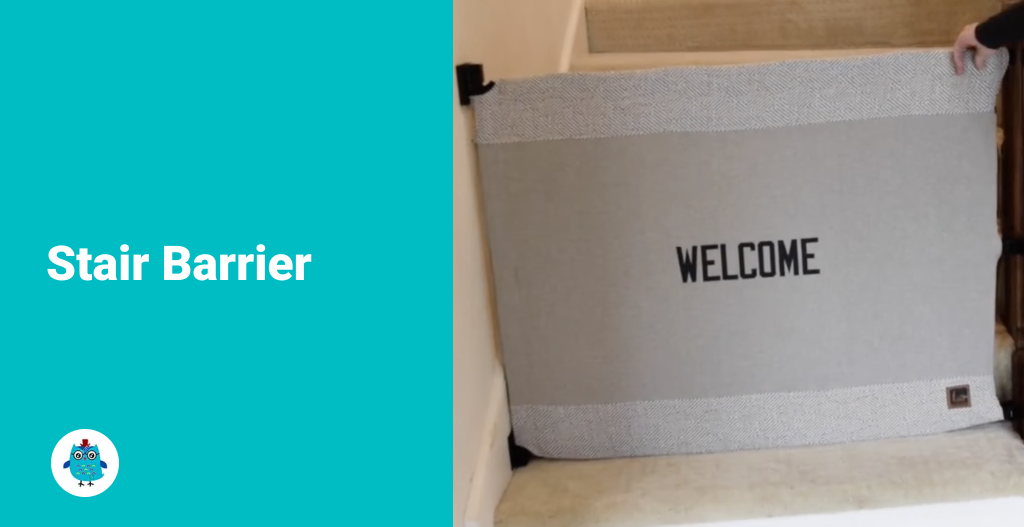
Stair barriers are designed specifically for staircases and can be attached to the wall or banister. They usually come with all the necessary hardware for installation.
- Materials needed: A stair barrier kit
 can be purchased online or at a home improvement store.
can be purchased online or at a home improvement store. - Security: Stair barriers are typically very secure and designed specifically for this purpose.
- Duration: This is a more permanent solution.
- Benefits: Stair barriers are secure and designed specifically for blocking stairs. They can also be more aesthetically pleasing than some other methods.
- Inconveniences: Stair barriers can be more expensive than other methods and require installation.
- Tools/Skills: Basic tools like a screwdriver may be needed for installation. Some basic DIY skills would be beneficial but optional, as most kits have instructions.
Use a Room Divider
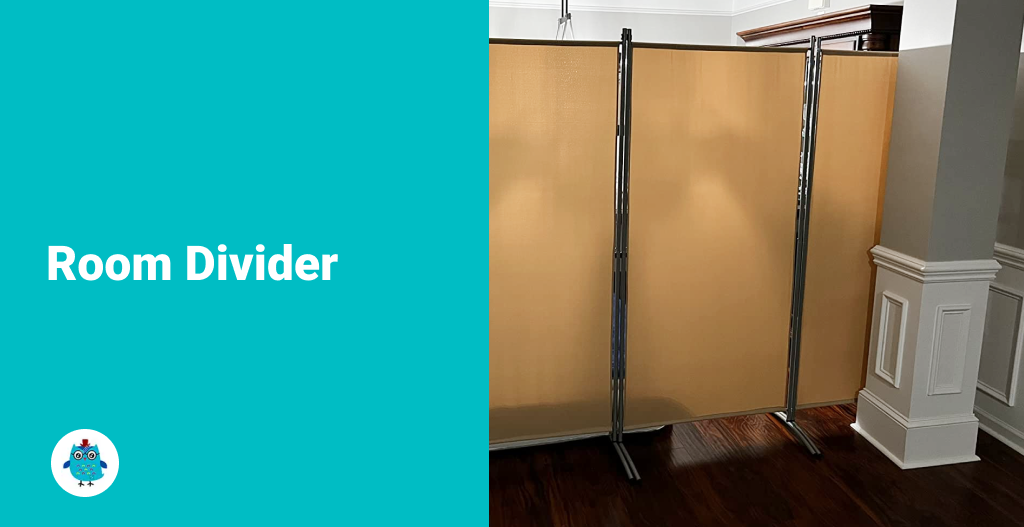
Room dividers can be placed in front of the staircase to block access. They should be tall enough that a child or pet cannot climb over them.
- Materials needed: A room divider
 or large folding screen.
or large folding screen. - Security: This method can be secure if the divider is sturdy and tall enough. However, it may not be as secure as a fixed gate or barrier.
- Duration: Depending on your needs, this can be a temporary or long-term solution.
- Benefits: Room dividers are easy to set up and move and don’t require installation. They can also add to your home decor.
- Inconveniences: Room dividers may not be as secure as other methods and can be easily knocked over if not sturdy enough.
- Tools/Skills: No special tools or skills are needed for this method.
Use Stair Bumpers

Stair bumpers are foam-filled cushions that can be installed on the edges of stairs to prevent falls. They are usually attached with adhesive.
- Materials needed: Stair bumpers
 can be purchased online or at a baby safety store.
can be purchased online or at a baby safety store. - Security: Stair bumpers can provide a level of safety by softening the edges of stairs, but they do not actually block access to the stairs.
- Duration: This can be a long-term solution.
- Benefits: Stair bumpers can help prevent injuries from falls on stairs. They are also easy to install.
- Inconveniences: Stair bumpers do not block access to stairs, so they should be used in conjunction with another method if the goal is to prevent access. They also require regular checks to ensure they are securely attached.
- Tools/Skills: No special tools or skills are needed for this method.
Close Off the Room at the Top or Bottom of the Stairs

This method involves installing a door or gate to block access to the stairs. The door or gate should be installed with a childproof lock to prevent children from opening it.
- Materials needed: A door or gate, hardware for installation, and a childproof lock.
- Security: This method is very secure, as it completely blocks access to the stairs.
- Duration: This is a more permanent solution.
- Benefits: This method is very secure and can be used with other strategies for added security. It also provides a clear barrier to the stairs.
- Inconveniences: This method can be more expensive and time-consuming to implement, requiring installation. Depending on the layout, It may only be suitable for some homes.
- Tools/Skills: Basic tools like a screwdriver and a drill will be needed for installation. Some basic DIY skills would be beneficial.
Install Tension Rods
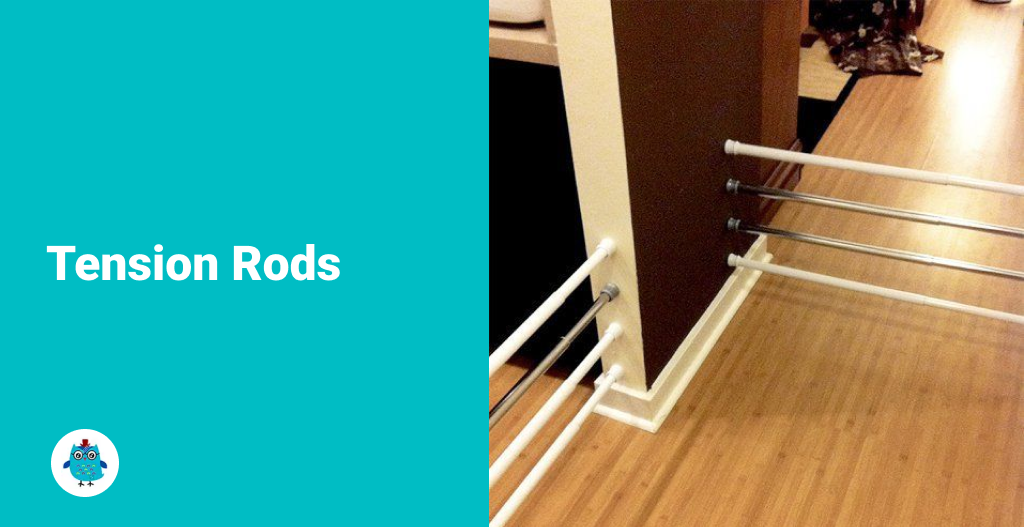
Tension rods can be placed between walls or banisters to create a barrier. They should be adjusted so that they fit snugly and cannot be easily pushed down.
- Materials needed: Tension rods
 of the right size for your staircase and possibly hooks or brackets for additional support.
of the right size for your staircase and possibly hooks or brackets for additional support. - Security: This method can be secure if the rods are sturdy and fit snugly. However, it may not be as secure as a fixed gate or barrier.
- Duration: Depending on your needs, this can be a temporary or long-term solution.
- Benefits: Tension rods are relatively easy to install and adjust, and they don’t require any permanent changes to your home.
- Inconveniences: Tension rods may not be as secure as other methods and can be easily knocked down if not installed securely.
- Tools/Skills: No special tools or skills are needed for this method.
Use Fabric Barriers
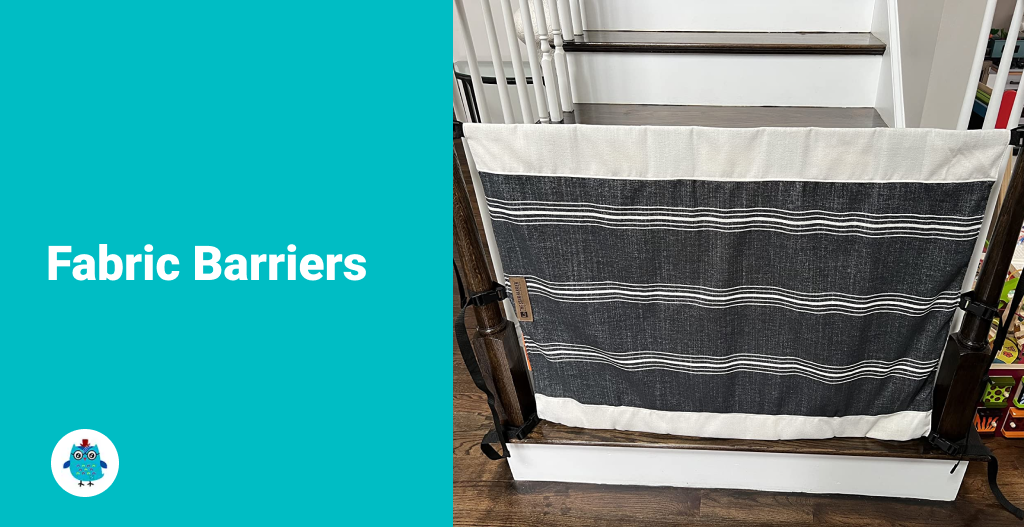
Fabric barriers can be attached to the wall or banister to block access to the stairs. They should be securely attached and high enough that a child or pet cannot climb over them.
- Materials needed: Fabric barriers designed for stairs
 or fabric and other materials to create your own barriers, such as hooks or adhesive strips.
or fabric and other materials to create your own barriers, such as hooks or adhesive strips. - Security: This method can be secure if the fabric is sturdy and securely attached. However, it may not be as secure as a fixed gate or barrier.
- Duration: Depending on your needs, this can be a temporary or long-term solution.
- Benefits: Fabric barriers can be more aesthetically pleasing than other methods and can be customized to match your home decor.
- Inconveniences: Fabric barriers may not be as secure as other methods, and they require regular checks to ensure they are securely attached.
- Tools/Skills: Basic tools like a hammer or adhesive strips may be needed for installation. Some basic DIY skills would be beneficial.
Create a DIY Netting Barrier
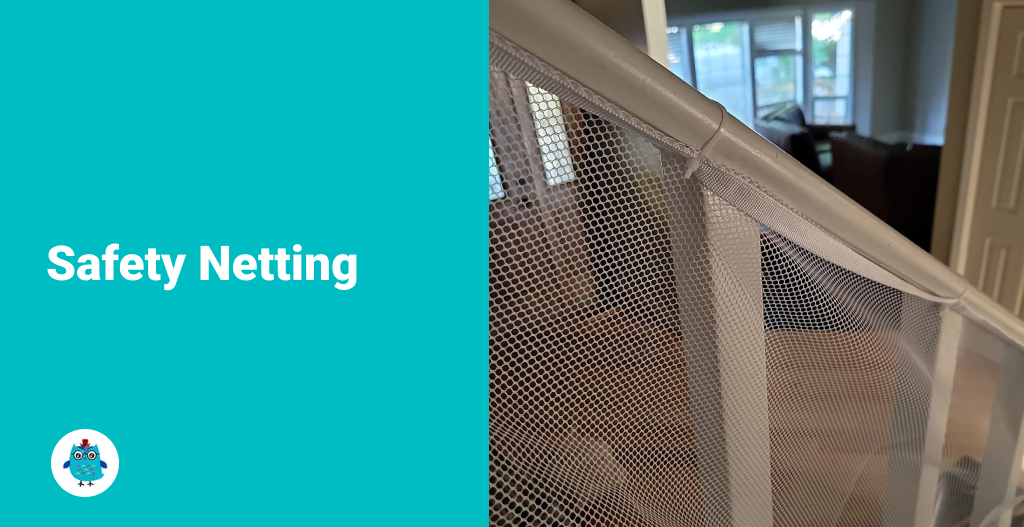
Netting can be attached to the walls or banisters to create a barrier. It should be securely attached and high enough that a child or pet cannot climb over it.
- Materials needed: Netting
 of the right size for your staircase and hooks or adhesive strips for attachment.
of the right size for your staircase and hooks or adhesive strips for attachment. - Security: This method can be secure if the netting is sturdy and securely attached. However, it may not be as secure as a fixed gate or barrier.
- Duration: Depending on your needs, this can be a temporary or long-term solution.
- Benefits: Netting barriers can be more aesthetically pleasing than other methods, especially for stairs with a more open design, as it will create a barrier without obstructing the view.
- Inconveniences: Netting barriers may not be as secure as other methods, and they require regular checks to ensure they are securely attached.
- Tools/Skills: Basic tools like a hammer or adhesive strips may be needed for installation. Some basic DIY skills would be beneficial.
Please note that while these methods can be effective, they may provide a different level of security than a traditional baby gate. Always supervise children and pets near stairs, even when using these methods.
Why Would You Need to Block Stairs Without Baby Gate
The baby-proofing strategy that works perfectly in one scenario might not fit another. I’ve learned that successful baby-proofing is about adapting to these varying circumstances. This section breaks down the scenarios you might face and how our suggested stair safety ideas can be applied, from temporary housing to unique architectural designs.
- For the Aesthetic-Minded Family: If you’ve put a lot of thought into your home’s decor, the idea of a clunky plastic baby gate might not sit well with you. My friend Emma, an interior designer and mother of twins, felt the same. Instead, she opted for safety netting. It’s almost invisible and blends beautifully into any interior, offering a secure yet aesthetically pleasing solution.
- When Moving is a Frequent Affair: Then there’s my colleague Mike, who moves a lot for work. In a rented space, you might not want (or be allowed) to drill holes for gates. Portable play yards and retractable gates have been game-changers for him. They’re easy to set up, remove, and cause zero damage to the property.
- Dealing with Unusual House Layouts: I remember visiting my cousin who lives in a heritage home with wide stairs. Traditional baby gates just wouldn’t fit. A custom-built barrier, while more expensive, turned out to be the perfect solution. This kept her toddler safe without detracting from the house’s unique charm.
- When Safety is Temporary: When my kids were younger, we often hosted playdates. It was essential to block off the stairs for those few hours. Moving a bookshelf or a big potted plant in front of the staircase worked like a charm. Of course, you must ensure these are sturdy enough not to be pushed aside by determined toddlers.
In the end, remember that baby-proofing aims to create a safe environment for your child to explore. Our children’s safety is paramount, but it shouldn’t come at the expense of their curiosity and desire to learn.
Now, let’s move on to a specific scenario I’ve heard about frequently from fellow parents.
Portable and Damage-Free: Baby Gates for Temporary Homes
Whether you’re renting a home, staying in a vacation rental, or constantly moving, the thought of installing a traditional baby gate might not be an option on the menu. Holes in the wall? Potential damage charges? No, thank you! Luckily, options address these concerns: portable and no-drill baby gates.
Portable and no-drill gates are the epitome of flexibility. They are easy to install, equally easy to remove, and most importantly, they leave no trace behind. When renting a vacation cabin, we used a pressure-mounted gate. It was a breeze to set up.
- Fabric Baby Gate: These baby gates
 are made of sturdy, child-safe fabric and are an excellent lightweight option. They often roll up for easy transport and unroll to stretch across your staircase. A great choice for parents seeking a gate that is both functional and doesn’t clash with home decor.
are made of sturdy, child-safe fabric and are an excellent lightweight option. They often roll up for easy transport and unroll to stretch across your staircase. A great choice for parents seeking a gate that is both functional and doesn’t clash with home decor. - Pressure-Mounted Gate: Pressure-mounted gates
 are held in place by pressure against the door frame or walls. They are easy to install and remove, requiring no tools or drilling. However, their design makes them better suited for level surfaces and might not be the best option for top-of-stairs use. You can even use wall protectors
are held in place by pressure against the door frame or walls. They are easy to install and remove, requiring no tools or drilling. However, their design makes them better suited for level surfaces and might not be the best option for top-of-stairs use. You can even use wall protectors to add an extra level of protection against damage.
to add an extra level of protection against damage. - Free Standing Baby Gate: These baby gates
 stand independently without needing wall or door frame support. They’re particularly useful in open-concept homes or unconventional spaces where mounting isn’t possible. As they’re not secured to the wall, it’s essential to ensure they’re sturdy enough to withstand a child’s push.
stand independently without needing wall or door frame support. They’re particularly useful in open-concept homes or unconventional spaces where mounting isn’t possible. As they’re not secured to the wall, it’s essential to ensure they’re sturdy enough to withstand a child’s push.
However, while these gates are incredibly convenient, they may not offer the same level of stability and safety needed to gate dangerous staircases. This is why assessing your child’s behavior and the gate’s sturdiness is critical before deciding.
Conclusion
As a dad to two little explorers, I can’t emphasize enough the importance of securing your stairs. We’ve explored many solutions to block stairs without a traditional baby gate, and I hope you’ve found them helpful. But here’s the fatherly truth. These are alternative options that can be useful n temporary situations. They might not provide the same level of security as a solid, hardware-mounted gate.
I’ve been there, the heart racing every time your toddler wobbles near the staircase. My youngest one, quite the explorer, gave us a few scares until we found the right solution. My buddy, Mark, used fabric gates for a while when they were renting. But, he confessed, he was always a little on edge. Nothing matches the assurance a well-fitted hardware gate brings.
As parents, we sometimes have to make temporary arrangements and get creative. But let’s remember. These alternatives are just that – alternatives. They’re typically less secure than hardware-mounted gates regarding stair safety.
But fear not! I’ve got you covered there as well. If you’re looking for the best ways to secure your stairs with baby gates, check out my other article, “Safely Securing Stairs” It dives deep into hardware-mounted gates, installation tips, and choosing the right gate for your stairs.
Remember, there’s no one-size-fits-all in parenting, but there’s one thing we all share – the desire to keep our children safe.
Stay safe, and keep exploring.

